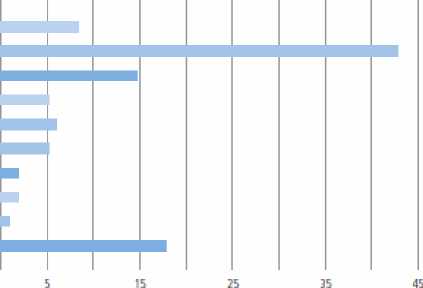18
• 11.000 places provided for young people in a „voluntary year of social service.46
The voluntary workers cover different areas of activity:47
Voluntary workers and their different areas of activity
Board of Directors ! Management
Assistanceto Individuals
Assistance to Groups
TedinicalAssfstanceJ Housekeeping
Planning/ Implementation OfMeasures
OrganisationJAdministratioii /PR
Transport i Driving Services
Fundraising
TrainingJEducation
Mises Ianecus

Sooce Detnr⅛r Ca rasrabτ⅛ !И0
The economic importance of the voluntary welfare associations is considerable:48
• annual increase in value: > 50 billion €. In Bremen: 3 % of the GDP 200549.
• total volume of income: appr. 70 billion € p.a., 4,5 % of the national wage bill.
• very high employment rate for women (> 70 %) and a high rate of part-time work
(41 %).
• predominant funding by the public: > 80 % remuneration for services and grants-
in-aid.
2.4 Sources of Financing
Consistent with the principle of subsidiarity the German nonprofit sector including the
voluntary welfare associations receives the bulk of its revenue from public sector
50
sources.
46 BAGFW 2003: 13: BAGFW 2002: 78-79.
47 BAGFW 2003: 17.
48 Boeβenecker, 2007:3, BAGFW 2002: 95-97.
49 Schneider 2008: 13-14.
50 Priller/Zimmer/Anheier/Toepler/Salamon 1999: 109; Priller/Zimmer 2001: 209-220. But in contrast to
the voluntary welfare associations only about one-third of all nonprofit organizations in Germany re-
ceive the majority of their funding from the public sector: Priller/Zimmer/Anheier/Toepler/Salamon
1999: 113. See to the funding of social service: Dahme/Schütter/Wohlfahrt 2008:114-129.
More intriguing information
1. Auctions in an outcome-based payment scheme to reward ecological services in agriculture – Conception, implementation and results2. Heavy Hero or Digital Dummy: multimodal player-avatar relations in FINAL FANTASY 7
3. The name is absent
4. Howard Gardner : the myth of Multiple Intelligences
5. The changing face of Chicago: demographic trends in the 1990s
6. Mergers under endogenous minimum quality standard: a note
7. The name is absent
8. Willingness-to-Pay for Energy Conservation and Free-Ridership on Subsidization – Evidence from Germany
9. Anti Microbial Resistance Profile of E. coli isolates From Tropical Free Range Chickens
10. Comparison of Optimal Control Solutions in a Labor Market Model